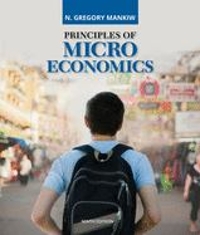Question
The environment may be altered by forces within the biotic community, as well as by relationships between organisms and the physical environment. The carrying capacity
The environment may be altered by forces within the biotic community, as well as by relationships between organisms and the physical environment. The carrying capacity of an ecosystem is the maximum number of organisms that an area can support on a sustained basis. The density of a population may produce such profound changes in the environment that the environment becomes unsuitable for the survival of that species. For instance, overgrazing of land may make the land unable to support the grazing of animals that lived there. Read the information below and answer the questions that follow.
Background Information:
Before 1905, the deer on the Kaibab Plateau were estimated to number about 4,000. The average carrying capacity of the range was then estimated to be about 30,000 deer. On November 28th, 1906, President Theodore Roosevelt created the Grand Canyon National Game Preserve to protect the "finest deer herd in America."
Unfortunately, by this time the Kaibab forest area had already been overgrazed by sheep, cattle, and horses. Most of the tall grasses had been eliminated. The first step to protect the deer was to ban all hunting. In addition, in 1907, The Forest Service tried to exterminate the predators of the deer. Between 1907 and 1939, 816 mountain lions, 20 wolves, 7388 coyotes and more than 500 bobcats were killed.
Signs that the deer population was out of control began to appear as early as 1920 - the range was beginning to deteriorate rapidly. The Forest Service reduced the number of livestock grazing permits. By 1923, the deer were reported to be on the verge of starvation and the range conditions were described as "deplorable."
The Kaibab Deer Investigating Committee recommended that all livestock not owned by local residents be removed immediately from the range and that the number of deer be cut in half as quickly as possible. Hunting was reopened, and during the fall of 1924, 675 deer were killed by hunters. However, these deer represented only one-tenth the number of deer that had been born that spring. Over the next two winters, it is estimated that 60,000 deer starved to death.
Today, the Arizona Game Commission carefully manages the Kaibab area with regulations geared to specific local needs. Hunting permits are issued to keep the deer in balance with their range. Predators are protected to help keep herds in balance with food supplies. Tragic winter losses can be checked by keeping the number of deer near the carrying capacity of the range.
Answer the following questions:
1. Graph the deer population data. You may submit a graph electronically or bring a hardcopy to class.
2. During 1906 and 1907, what two methods did the Forest Service use to protect the Kaibab deer?
3. Were these methods successful? Use the data from your graph to support your answer.
4. Why did the Kaibab deer population decline after 1924?
5. What future management plans would you suggest for the Kaibab deer herd?
6. Is the carrying capacity of a particular environment constant? If it is not constant, what can change it?
7. In what ways could the Kaibab deer change the carrying capacity of their environment?
| Year | Deer Population |
| 1905 | 4,000 |
| 1910 | 9,000 |
| 1915 | 25,000 |
| 1920 | 65,000 |
| 1924 | 100,000 |
| 1925 | 60,000 |
| 1926 | 40,000 |
| 1927 | 37,000 |
| 1928 | 35,000 |
| 1929 | 30,000 |
| 1930 | 25,000 |
| 1931 | 20,000 |
| 1935 | 18,000 |
| 1939 | 10,000 |
Step by Step Solution
There are 3 Steps involved in it
Step: 1

Get Instant Access to Expert-Tailored Solutions
See step-by-step solutions with expert insights and AI powered tools for academic success
Step: 2

Step: 3

Ace Your Homework with AI
Get the answers you need in no time with our AI-driven, step-by-step assistance
Get Started


